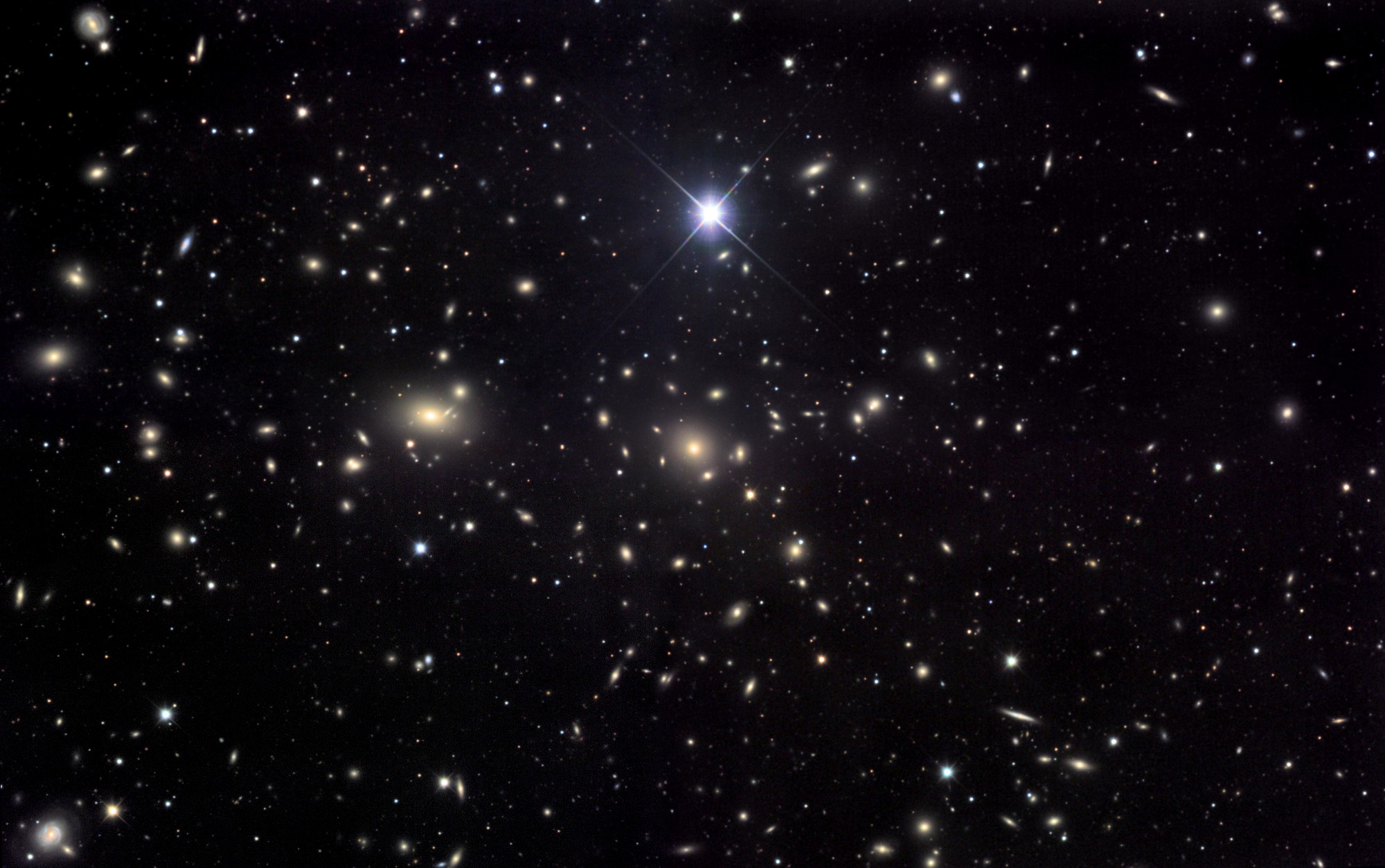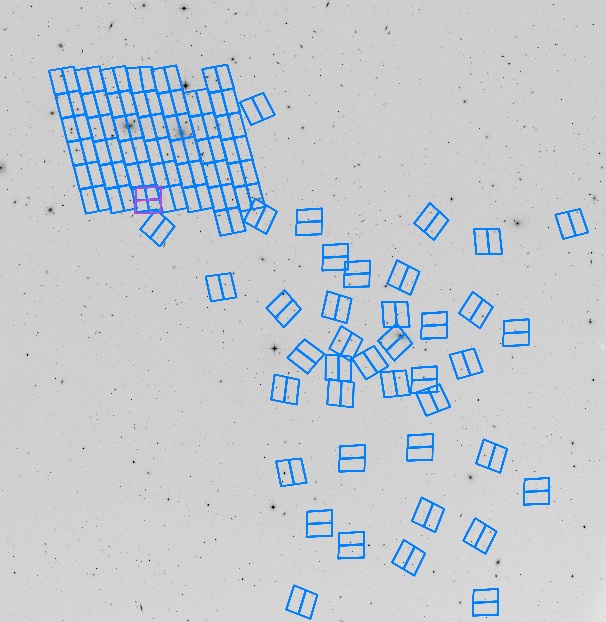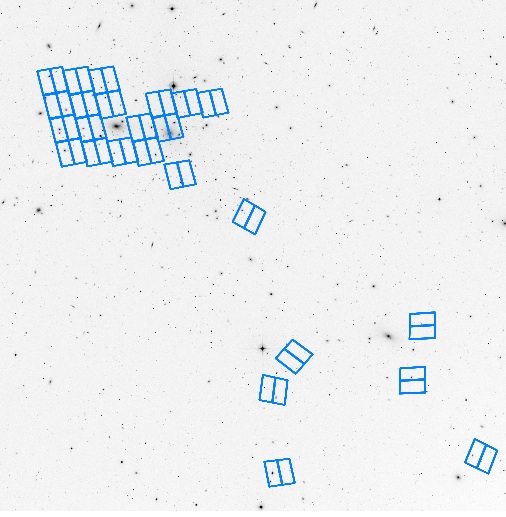An HST/ACS Treasury Survey of the Coma Cluster

Ground-based image roughly corresponding to the rectangular tiled area,
referred to as the `core region' of the Coma galaxy cluster,
shown in the two images at the bottom of this page.
(Credit & Copyright: Jim Misti.)
The Hubble Space Telescope's survey of the Coma galaxy cluster is one of only two
prestigious
Cycle 15 (2006/7) Treasury
Programs. It involves more than 30 research astronomers,
including those at Swinburne University of Technology, from nine nations.
The survey goal is to image 740 square arcmin of sky using
Hubble's Advanced Camera for Surveys (ACS)
F475W (blue) and F814W (red) filters.
The selected areas
cover both the core (see above) and infall region (see below) of this rich galaxy cluster.
The Coma cluster provides the opportunity to study galaxies in an environment different
to that in any previous large HST programme. The
Coma core is the densest galaxy environment in the local universe. As
such, it provides a key local, high-density benchmark for comparison
to surveys of less dense and relaxed environments (e.g., the Virgo, Fornax and
Perseus galaxy clusters), high-redshift HST cluster surveys and field surveys such as
HUDF, GOODS and GEMS. Key science goals of this project are:
- To measure the luminosity function down to MV = -9 mag
for comparison with other, lower density, nearby clusters studied by
HST. This is critical for detecting dwarf galaxies at
luminosities that overlap with the Local-group dwarf spheroidals, and
testing whether the faint-end LF slope in clusters is universal.
- To measure detailed morphologies using bulge-disk decomposition
techniques for a wide range of galaxy luminosities, including those at
the faint end of the cluster LF. HST images will also reveal compact
nuclei, nuclear bars, disks, dust rings and galaxy cores partially depleted
of stars. Comparison with current results in Fornax, Perseus and
Virgo will outline the dependence on the galactic neighbourhood.
- To derive global colors and color gradients at a range of
luminosities and environments in order to investigate the origin of cluster
galaxies, and to understand the environmental process acting upon
them.
- To investigate the bright and faint ends of the global scaling
laws among structural parameters (e.g., luminosity-radius,
luminosity-velocity dispersion, fundamental plane) and assess any
environmental dependence.
- To provide the structural information with which to define and
classify large samples of Coma dwarfs for complementary spectroscopic
observations on the latest, and future, generations of
high-resolution, multi-object spectrographs on the largest
ground-based telescopes.
- Comparison of the luminosity functions, colour distributions and
colour magnitude diagrams of Globular clusters between galaxies of a
range of luminosities.
- Study of mergers in a high density environment, and their effect
on star formation activity, for instance the morphology of "E+A"
galaxies detected in spectroscopic surveys.
- To help constrain the "dry" merger history of massive galaxies.
The Coma survey was originally scheduled for completion in early 2008,
but the failure of the ACS on
January 27, 2007 means that it will not now be complete until after
HST Servicing
Mission 4 in early 2009. The HST survey is
paused, with 28% of its data in-hand. However the wider project will
continue to gather data throughout this period. Members of the
collaboration have either brought in, or subsequently obtained time
for, observations of the Coma cluster with the
VLA,
Spitzer/IRAC,
Galex,
XMM-Newton,
Chandra,
Keck/Deimos,
MMT/Hectospec,
CFHT/WIRCAM
and
Subaru/Suprime-Cam.


Left: Overlay on a DSS image of the ACS fields from the complete survey.
Right: Overlay on a DSS image of the ACS fields observed before the ACS failure on the 27th of January, 2007. (Credit: David Carter.)


